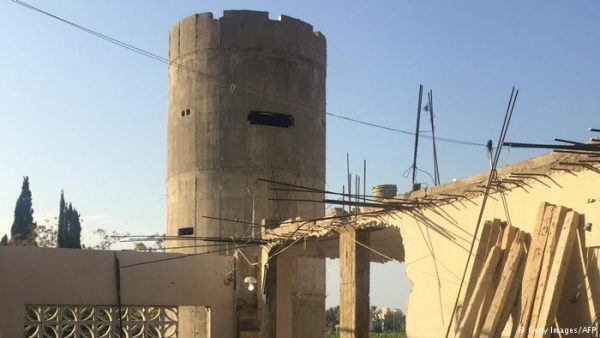
The Lebanese army assured the Palestinians that the decision to build a wall near the Ain el-Hilweh refugee camp is aimed at preventing terrorists from infiltrating their camp and the country.
“What is currently being built is a wall that protects some of the sectors that do not overlook the residential areas and houses inside. It aims to maintain the security of the camp and prevent terrorists from infiltrating to and from it. It also aims to close the tunnels leading to the orchards of the citizens,” the army said in a statement.
The statement added that “the issue had already been agreed upon during meetings held between officials of the Palestinian factions and the Intelligence Directorate.
“The entire entrances to the camp are open for the passage of people and vehicles, efforts to make them easier are underway,” concluded the statement.
The army was responding to criticism by the Palestinian resistance movement Hamas which called the planned wall “the wrong way to deal with the issue of Palestinian refugees”.
Located southeast of Lebanon’s coastal city of Sidon, Ain al-Hilweh population in the early 2000’s was around 70,000 residents. This changed when the Syrian civil war broke out in 2011, causing the population to swell to 120,000 Palestinian refugees.
“This wall… will only serve to hurt the refugees’ cause, threaten their future, harm their interests and contribute to the deterioration of their already-dire humanitarian condition,” Hamas said.
According to UN figures, roughly 460,000 Palestinian refugees are currently living in 12 major camps scattered across Lebanon.
According to the so called Cairo accord the Lebanese armed forces are not authorized to enter the camp and the government claims fugitives are residing within it. Loyalists belonging to various political factions live in the camp – recently there was fighting between Yasser Arafat’s Fatah movement and the Jund al-Sham Islamist group. Palestinians leaving the camp have to be inspected by Lebanese authorities.
The Cairo accord was an agreement reached on 2 November 1969 during talks between Yassir Arafat and the Lebanese army commander General Emile Bustani. Egyptian president Gamal Abdel Nasser helped broker the deal.
Under the agreement all the Palestinian refugee camps in Lebanon were removed from the stern jurisdiction of the Lebanese army’s Deuxième Bureau and placed under the authority of the Palestinian Armed Struggle Command
Lebanon’s government has been wary of its Palestinian population since its 15-year-long civil war between 1975 and 1990.
Ain al-Helweh currently faces some of the biggest issues in the eyes of Lebanese authorities. Assassinations are frequent as Fatah and Islamist groups like Jund al-Sham clash. In April, a car bomb went off in the camp. There’s also been claims that groups such as al-Qaeda and the so-called “Islamic State” are recruiting within the confines of the camp.
Lebanon also faces a worsening security situation as the civil war in neighboring Syria rages. Authorities hope the wall around the camp will be another precaution to keep the country stable in an unsecure region.
Leave a Reply
You must be logged in to post a comment.